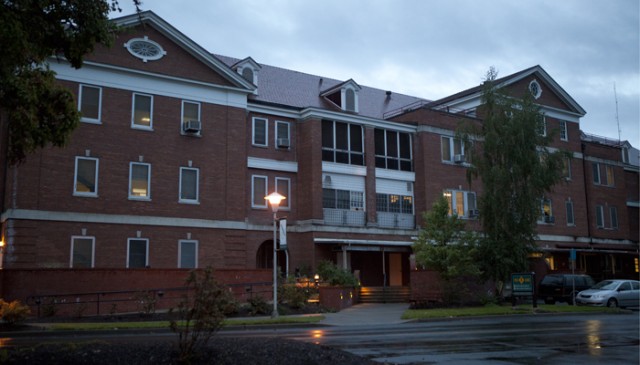“It wasn’t about the money. I just thought somebody should be held accountable,” said 86-year-old Doris Street, who received a $135,000 settlement in 2010 as compensation for the 2008 death of her brother, Carl Glaze. The median payment in VA wrongful death cases was $150,000.
Glaze, a World War II veteran, became paralyzed from the neck down when he fell in the bathroom two days after being admitted to a VA nursing home in Grand Island, Neb. He died nine days later at age 84.
“I had asked them not to leave him alone, and then they left him in the bathroom,” she said. “We all get upset when these things happen.”
In a written response to questions, agency spokeswoman Victoria Dillon said that while “any adverse incident for a veteran within our care is one too many,” the wrongful deaths identified by CIR represented a small fraction of the more than 6 million veterans who seek care from the agency every year.
The agency, Dillon said, is “committed to continuous improvement.” When a death occurs, “we conduct a thorough review to understand what happened, prevent similar incidents in the future, and share lessons learned across the system,” she said.
The revelations come as the department faces intense scrutiny from members of Congress over the number of preventable deaths at VA facilities. The House Committee on Veterans’ Affairs has scheduled a hearing on preventable deaths for April 9.
In September, the committee held a hearing to examine patient deaths at VA hospitals in Pittsburgh, Atlanta, Dallas and Jackson, Miss.
At the hearing, lawmakers accused the agency of failing to discipline officials responsible for unnecessary deaths, pointing out that it has instead provided performance bonuses to these executives.
For example, after an outbreak of Legionnaires’ disease at the agency’s hospital in Pittsburgh left six veterans dead and at least 21 ill, the VA regional director, Michael Moreland, received a nearly $63,000 bonus.
A five-page performance evaluation, which led to the bonus, made no mention of the outbreak, which began in 2011. After receiving the bonus, Moreland retired.
“It’s not enough for VA to simply compensate the families of those who died,” said Rep. Jeff Miller, R-Fla., chairman of the House Committee on Veterans’ Affairs. “In order to provide real closure for those struck by these heartbreaking preventable deaths, VA needs to hold fully accountable the employees who allowed patients to slip through the cracks.”
At a budget hearing March 13, lawmakers pressed Secretary of Veterans Affairs Eric Shinseki to provide examples of agency staff who had been disciplined after medical errors resulted in a veteran’s death.
Shinseki responded more generally, saying 6,000 VA employees had been “involuntarily removed” over the past two years, including six senior managers.
Independent legal analysts say the nearly 1,000 wrongful death payments in the decade after 9/11 represent a small percentage of the veterans who have died because of malpractice by the Department of Veterans Affairs.
Unlike the private sector, where survivors can file cases in state and federal court and often win large punitive damages, families of patients who die under VA care must exhaust a monthslong administrative review process before filing a lawsuit. Even if they succeed, families can win only actual and not punitive damages from the federal government.
As a result, lawyers are reluctant to take cases, and many families never file – or see a dime.
“The VA fights every case tooth and nail, and so cases drag on for years,” said Cristobal Bonifaz, a Massachusetts attorney who in 2009 won a $350,000 settlement for the parents of Marine Lance Cpl. Jeffrey Lucey. Lucey was 23 when he hanged himself with a garden hose in his parents’ basement after being turned away from psychiatric care at the VA in Northampton, Mass. The payout came five years after his death.
Among Bonifaz’s current clients is Tracy Eiswert, who had moved into her car with her two young children after her husband, 31-year-old Iraq War veteran Scott Eiswert, shot himself in the head in 2008. The Nashville, Tenn., VA had denied his disability claim for post-traumatic stress disorder.
Three months after his death, the VA reversed itself, saying it was “clearly and unmistakably in error” for failing to grant Scott Eiswert’s disability claim, and the agency began sending Tracy Eiswert survivor benefits checks of $1,195 a month.
Despite the reversal, Tracy Eiswert decided to press ahead with a wrongful death lawsuit against the VA, in part because of the toll her husband’s suicide took on their children. “We’re still living with it today,” she said.
The VA declined to comment on Scott Eiswert’s death. In court, the VA has defended itself on a legal technicality, arguing that Tennessee law supersedes federal law in the case and that the Eiswert family failed to follow procedures prescribed in the state statute.
Filed in 2010, the case is still pending.
